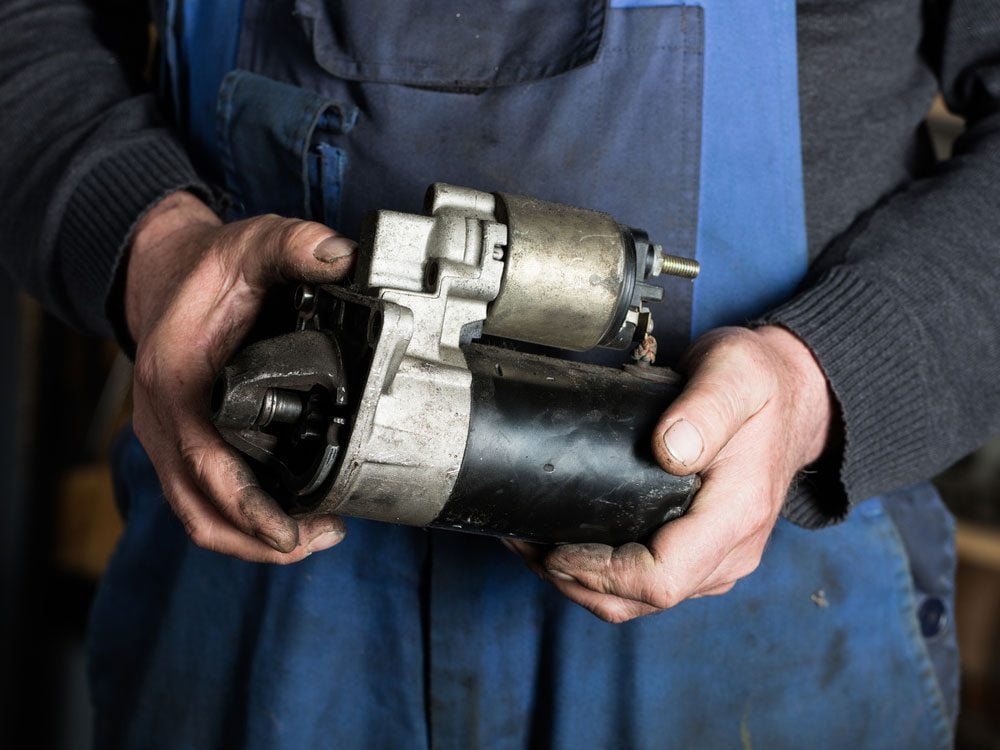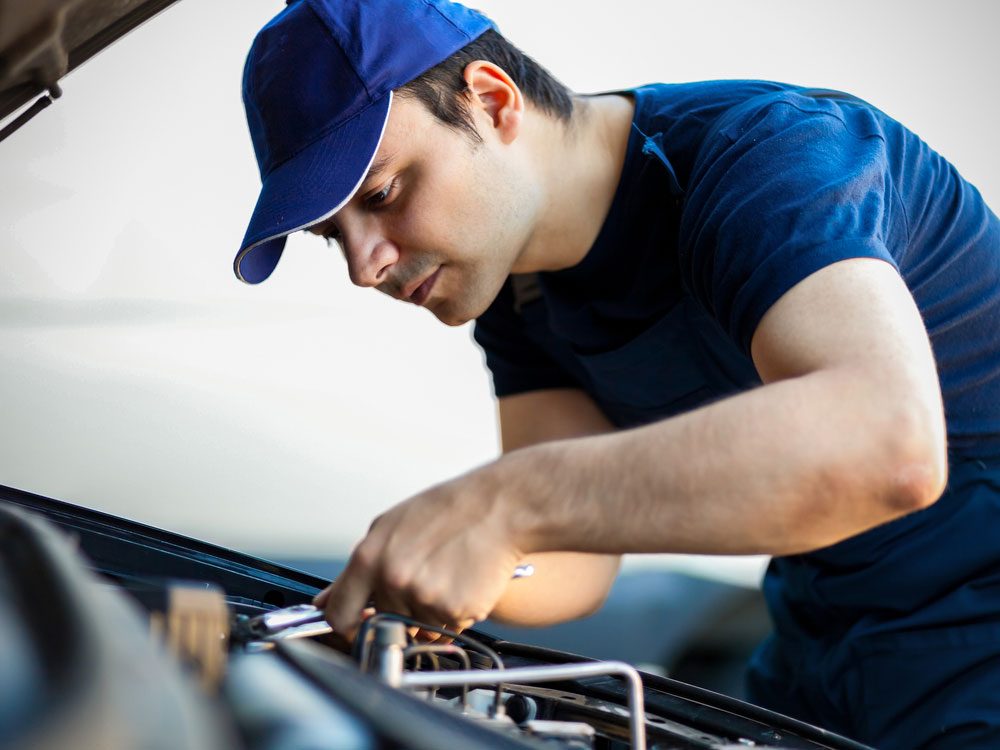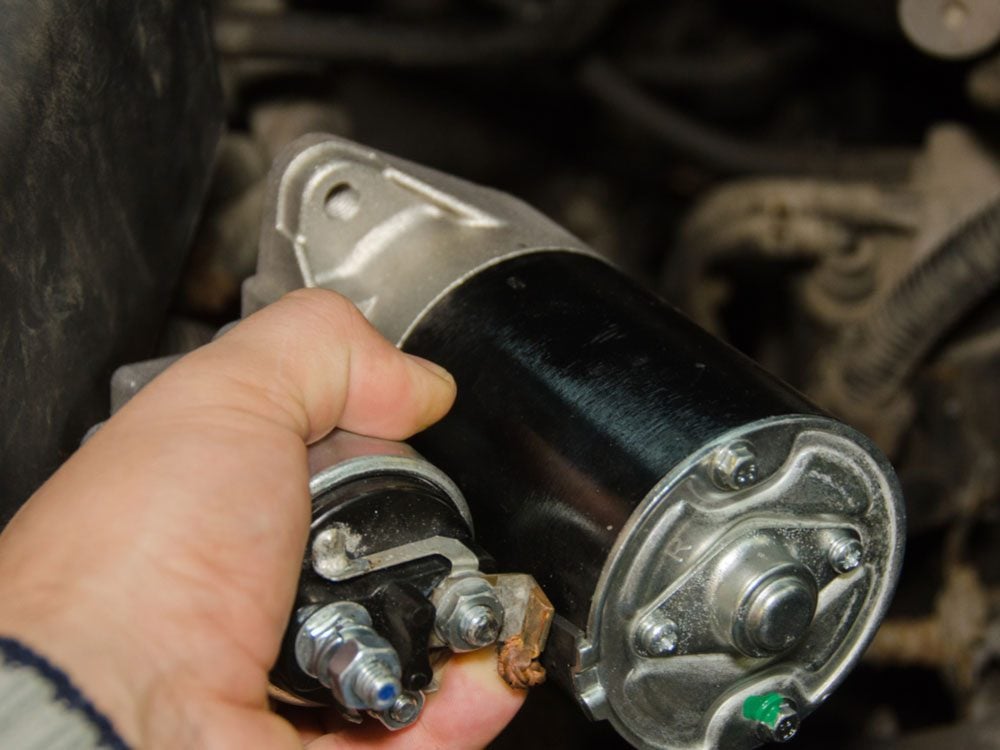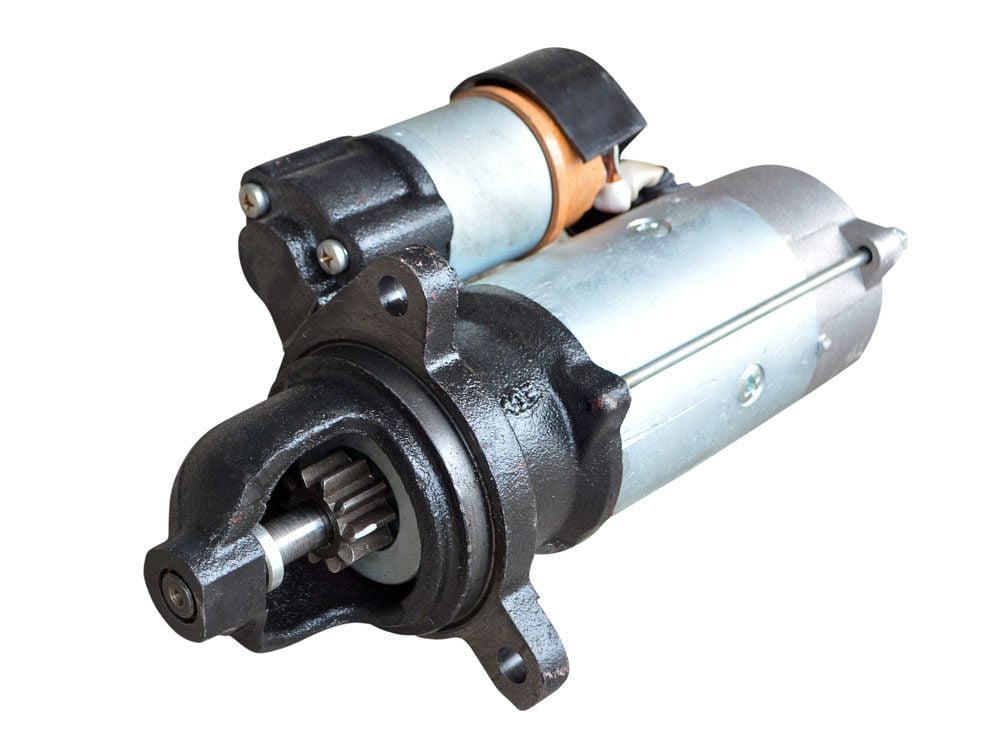
Replacing a Car Starter: Step By Step Instructions
Before replacing a car starter, make sure that the starter or solenoid is indeed the problem. Have both checked if you have any doubts. (This troubleshooting guide might help.) Check your battery and battery/starter cables for any wear and corrosion. Clean up the corrosion and replace the battery or cables if needed. If your vehicle has a starter-mounted solenoid, it’s a good idea to replace the solenoid when you replace the starter.
Tools needed to replace a starter:
- Sockets and wrenches
- Screwdriver
- Pliers
- Battery terminal puller
- Drive-on ramps, jack or jackstands

Preparing to install a replacement starter
- Get the correct starter and solenoid for your vehicle. Check with your local NAPA Auto Parts store for the specific parts you need.
- Let the engine cool.
- Gather together all the necessary tools.
- Place the vehicle on ramps, or jack up the front and support it on jack stands. Follow all safety precautions. Block the rear wheels. Never work under a vehicle supported by a jack. (Here are more tips on how to use a car jack safely.)
- Be sure the ignition is off and then remove the negative (grounded) battery cable from the battery with the puller after loosening the attaching bolt.
- Note all wiring connections to the starter and solenoid.
Here are the essential tools every home mechanic should have.

Replacing the Starter
- Remove the battery/starter cable attached to the starter-mounted solenoid or to the starter.
- Remove any other wires attached to the solenoid if it is starter-mounted. Note the wire positions so you can replace them correctly.
- Remove the starter attaching bolts (usually two or three). Most bolts attach horizontally through the mounting flange. On GM cars, the bolts are vertical, and there may be a shim between the engine and starter block. If there is one, it must be used with the new starter. Remove any support bracket that holds the front of the starter.
- Drop the starter down. You may have to turn the wheels to one side or disconnect an idler arm on some Ford cars. On other cars you may have to remove or loosen transmission oil cooler lines or brackets, the exhaust pipe, flywheel housing cover, crossmember, ground strap, oil pressure sending unit or other parts to give you enough clearance to drop the starter down.
- Install the new starter in the reverse order of removal. Be sure you replace the original shim(s) on the GM-type starter if there were any when you removed the old starter. If there is a noise when the engine is starting or a whine after it starts, you may need to adjust the shims as follows:
-
- If there is a starter noise when you crank the engine, remove one full-length shim or add one short shim to the outboard pad only.
- If there is a high-pitched whine after the engine fires, add full-length shims one at a time until the noise disappears. Do not use more than four shims. To add a full-length shim, loosen bolt A, remove bolt B, add the shim and then retighten both bolts.
- Reattach the battery/starter cable to the starter. If the solenoid is starter-mounted, reconnect any other wires to it in their original positions.
Find out 13 things you should never do to your car.

Replacing the Solenoid
Solenoids are located either on a panel in the engine compartment or on the starter itself. To replace a panel-mounted solenoid:
- Remove the cable from the battery, the cable to the starter, and the small wire or wires, being sure to note their exact locations.
- Remove the mounting screws and lift off the solenoid.
- Install the new solenoid in the same location and reattach the wires and cable to the same terminals. Tighten all connections.
How to Replace a Starter-Mounted Solenoid
- Remove the starter.
- Remove the field coil strap from the solenoid terminal.
- Remove the attaching screws and bolts and remove the solenoid housing. You may have to rotate the housing. On some starters, the plunger and spring may be loose. On others, the solenoid plunger stays in the solenoid, and the end will have to be worked off the starter shift lever.
- Install the new solenoid in the reverse order of removal. If the plunger stays with the solenoid, the end must be engaged with the starter shift lever. If the solenoid plunger remained attached to the starter, insert it in the solenoid. Make sure the spring is in place between the plunger and solenoid body. Hold the body in place and tighten the attaching screws.
- Reconnect the cable and wiring when you install the starter.
- Reconnect the ground cable to the battery.
Now that you know what’s involved in replacing a starter, find out 100 more car repairs you can do on your own.